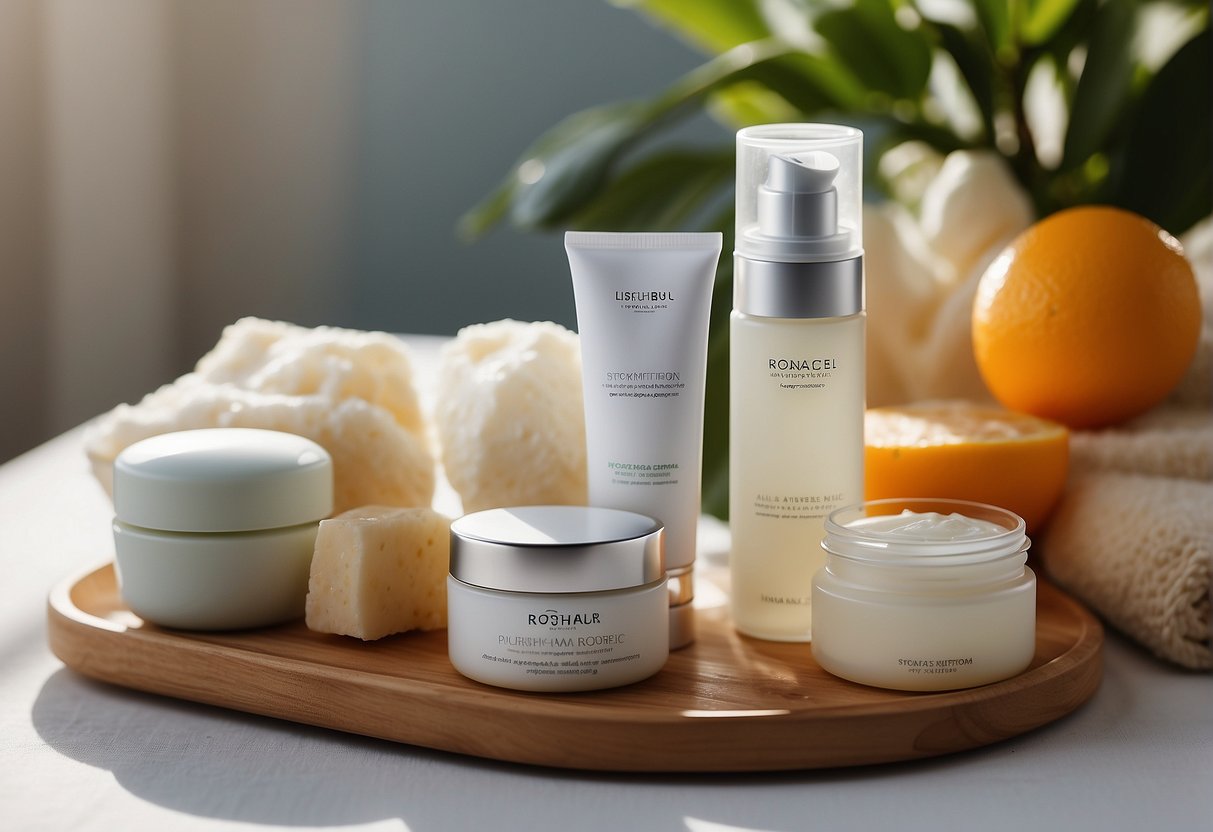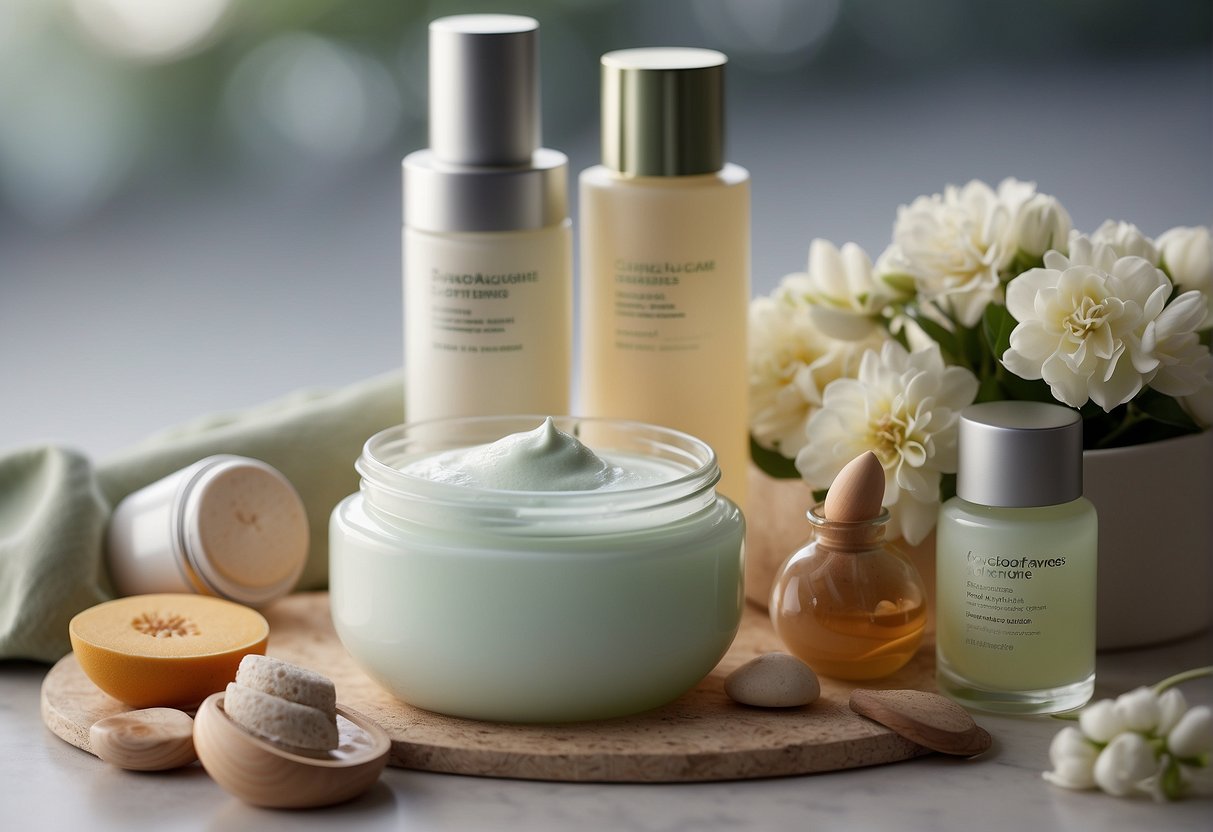Effective Skin Clearing Techniques: An Overview
Long-term rosacea is a skin condition that primarily affects the face and looks like visible blood vessels, acne, and redness. Managing rosacea involves understanding the condition, identifying triggers, and adopting a comprehensive treatment approach. Because there are many different treatments available, such as lifestyle modifications and prescription medications, and because each patient may respond differently, a personalized treatment plan is essential. Consistent treatment and staying away from recognized triggers can greatly lessen rosacea symptoms and enhance quality of life for those who have the condition.
Individuals seeking to manage their rosacea symptoms effectively can benefit from both professional care and daily skin care practices. Dermatologists regularly recommend gentle skin care routines alongside medical treatments to help control the condition. Moreover, a number of FDA-approved treatments, such as topical metronidazole, provide a medical avenue for managing the inflammation and breakouts associated with rosacea. Engaging in stress-reducing activities and gentle facial massages might also contribute to symptom relief. It's critical for those with rosacea to create a skin care routine that minimizes irritation and flare-ups.
Key Takeaways
- Rosacea treatment requires understanding the skin condition and personalized management strategies.
- Combined with mild daily skin care, professional dermatological treatments help manage symptoms.
- Identifying and avoiding personal triggers is crucial for minimizing rosacea flare-ups.
Understanding Rosacea

Rosacea is a chronic skin condition that frequently has flare-ups and remissions and causes persistent facial redness. To effectively manage rosacea, it is crucial to understand its symptoms, underlying causes, and classifications.
Symptoms and Diagnosis
Rosacea primarily presents as flushing, non-transient erythema (redness), papules and pustules, and visible blood vessels (telangiectasia). Some patients may experience additional symptoms such as itching, burning, or stinging. The National Rosacea Society Expert Committee defines specific phenotypes to aid in diagnosis. Since there is no definitive test to diagnose rosacea, a dermatologist will look for these signs during a skin examination and take the patient's history into consideration. Familiarity with these symptoms and clear communication of one's history can assist the dermatologist in identifying the disease.
Pathophysiology and Causes
The exact pathophysiology of rosacea is complex and not fully understood. It is known, however, that the condition involves inflammation and dysregulation of the facial blood vessels. Potential causes include genetic factors, environmental triggers, vascular instability, and inflammatory pathways. Recognizing these underlying processes can guide patients and physicians in crafting a personalized treatment strategy that addresses both the visible signs and root triggers.
Classification of Rosacea
Based on signs and symptoms, the National Rosacea Society Expert Committee revised the 2017 classification of rosacea into four standard subtypes: papulopustular, phymatous, ocular, and erythematotelangiectatic. The committee also recommended using a phenotype-based approach to diagnosis and classification, which focuses on the patient's observable characteristics and symptoms. These precise classifications and phenotypes are vital for determining the most effective treatment for each individual's rosacea.
Professional Care and Treatments
When managing rosacea, professional care often involves a combination of dermatological consultations, tailored prescription medications, and advanced laser or light therapies. Each treatment is selected to target specific symptoms and improve skin appearance effectively.
Consulting a Dermatologist
A dermatologist plays a crucial role in diagnosing and managing rosacea. They can help identify triggers and develop a personalized treatment plan. During an evaluation, a dermatologist may examine both the skin and eyes, as ocular rosacea is a common complication. A professional diagnosis is essential since no specific medical test for rosacea exists.
Patients should discuss their skin care routine and any concerns with their dermatologist to get recommendations that are both effective and gentle on the skin.
Prescription Medications
Prescription medications are a cornerstone in rosacea treatment, often starting with topical agents. Metronidazole, azelaic acid (branded as Finacea), and ivermectin are approved by the FDA and can reduce inflammatory lesions and erythema.
Oral antibiotics like doxycycline, which have antibacterial and anti-inflammatory qualities, may be recommended for moderate-to-severe cases. In more severe cases or when antibiotics are not an option, isotretinoin, a powerful oral medication, may be considered.
| Medication Type | Examples | Application | Purpose |
|---|---|---|---|
| Topical | Metronidazole | Once or twice daily | Treat inflammatory papules and pustules |
| Topical | Azelaic acid | Once or twice daily | Reduce redness and inflammatory lesions |
| Topical | Ivermectin | Once daily | Reduce inflammatory lesions and redness |
| Oral | Doxycycline | As directed by physician | Treat inflammatory lesions and ocular rosacea |
| Oral | Isotretinoin | As directed by physician | Reserved for severe cases |
Laser and Light Therapies
For people looking for rosacea treatment, there are more options available with different laser and light technologies. Visible blood vessels can be targeted using laser therapy to lessen flushing and redness. Some lasers, such as the pulsed dye laser, can minimize these vascular disease symptoms by bursting the blood vessels without damaging the skin around them.
Intense pulsed light therapy (IPL) and other forms of light therapy can also help with rosacea-related redness. However, because there is a chance of long-term pigmentation alterations, these therapies might not be appropriate for all skin types, especially darker skin. The full effects may not become apparent for several weeks, and repeat treatments are frequently required to maintain results. To weigh the pros and cons of these cutting-edge treatments, it is imperative to speak with a dermatologist.
- Effectiveness: These therapies can be effective; often, repeat treatments are needed.
- Considerations: Must consider skin type and potential risk of pigmentation changes.
-
Downtime varies based on the particular procedure and skin type, from minimal to moderate.
Overall, combining professional dermatological advice with approved therapies offers the best approach for those wishing to control rosacea and achieve clearer skin.
Daily Skin Care and Lifestyle Management

Effective rosacea management includes lifestyle adjustments to reduce triggers in addition to a committed daily skin care regimen. This section provides helpful advice on recognizing your own triggers and using the right skin care products.
Identifying and Managing Triggers
Individuals with rosacea can maintain clearer skin by recognizing and avoiding specific triggers that exacerbate the condition. Common triggers include:
- Environmental factors: Sun exposure, wind, and temperature extremes often lead to flare-ups, necessitating diligent sun protection with broad-spectrum SPF products.
- Dietary influences: Hot beverages, spicy foods, and alcohol consumption may trigger flushing and should be moderated.
- Emotional responses: Stress and anxiety can also provoke rosacea symptoms; thus, managing stress through techniques like meditation or counseling is beneficial.
- Skincare products: Certain ingredients found in everyday skincare items can cause irritation. It is recommended to perform patch tests for new products and observe for any adverse reactions. Try to use skincare without fragrances
Recommended Skin Care Products
A gentle and consistent approach to skin care is advised. The following are dermatologist-approved recommendations:
- Cleanser: Non-abrasive, gentle, and fragrance-free formulas used once or twice daily help maintain the integrity of facial skin without causing additional irritation.
- Moisturizer: A daily moisturizer that is hypoallergenic and non-comedogenic can hydrate and support the skin barrier while diminishing the effects of dry skin. Look for ingredients like glycerin or hyaluronic acid that help retain moisture.
- Sun Protection: Daily use of a sunscreen with SPF 30 or higher, applied liberally to protect the facial skin, is essential. For those with darker skin tones, using a gel or lotion formula can prevent the white cast commonly associated with physical sunscreens.
- Occlusive Agents: For more severe cases of dryness, an occlusive moisturizer or cream at night can help seal in moisture and aid in barrier repair.
Choose items that are designed to treat rosacea or ones that are expressly labeled as appropriate for sensitive skin. Keep in mind that greater outcomes can be obtained by using goods consistently and by using fewer products overall.
Frequently Asked Questions

It is essential to comprehend the variety of remedies available and their effectiveness while attempting to manage rosacea. The answers to the frequently asked questions below shed light on practical methods for having clearer skin.
What is the most effective treatment for managing rosacea symptoms?
The most effective treatment for managing rosacea symptoms often involves a combination of prescription medications and lifestyle modifications. Avoiding known triggers and practicing gentle skin care routines are critical steps. For individualized care plans, consulting a dermatologist is essential.
Which prescription creams are considered top choices for rosacea care?
Dermatologists frequently prescribe creams with active substances like metronidazole, azelaic acid, or ivermectin. Their anti-inflammatory qualities make them excellent options.
What recommendations do dermatologists commonly make for treating rosacea?
Dermatologists frequently advise utilizing sun protection, recognizing and avoiding triggers for rosacea, and following a mild skin care routine. It may also be suggested to use stress-reduction techniques and facial massages to minimize the severity of symptoms.
Are there any over-the-counter products that are effective for rosacea?
Certain over-the-counter medications with components like green tea extract or niacinamide may help reduce the symptoms of rosacea. Although they can't take the place of pharmaceutical treatments, they can help maintain general skin health.
What lifestyle changes can support rosacea treatment and lead to clearer skin?
Modifying one's lifestyle to protect skin from sun exposure, control stress, stay away from hot and spicy foods, and drink less alcohol are all helpful in treating rosacea. Using skincare products designed for sensitive skin is another way to stop symptoms from getting worse.
How soon after starting a rosacea treatment regimen can one expect to see results?
Treatment outcomes for rosacea can differ based on the type of treatment chosen and the severity of the problem. While some individuals may experience improvements in a matter of weeks, others may need more time to observe any changes. It's imperative to follow the treatment plan consistently and with patience.




